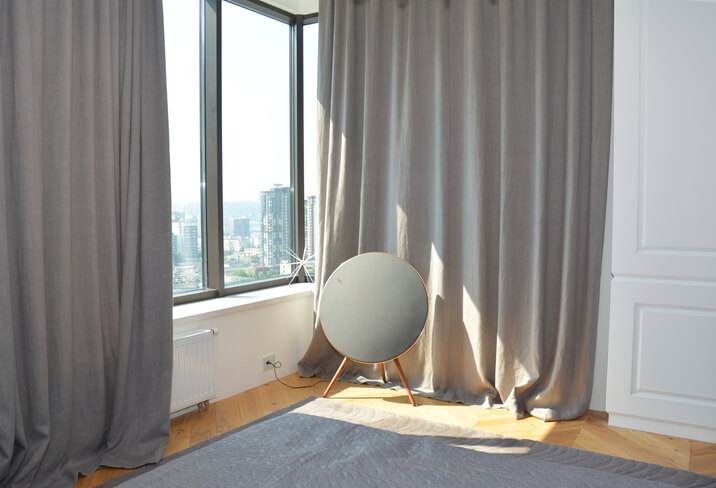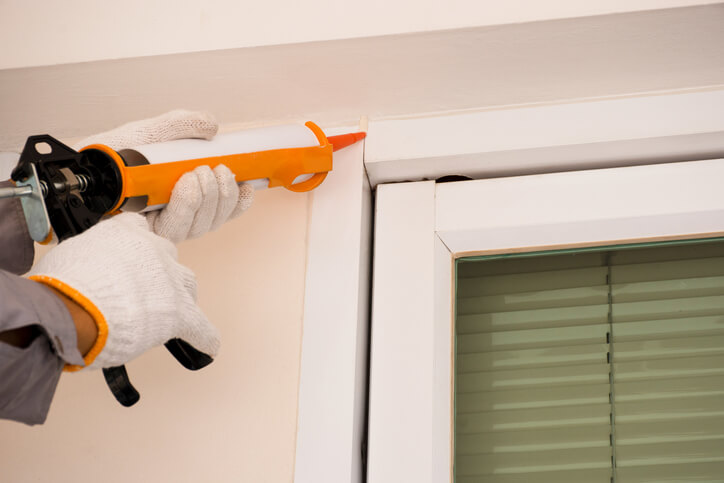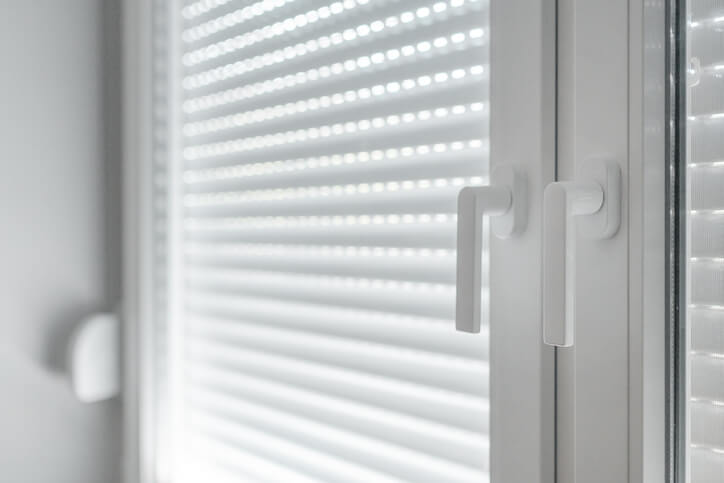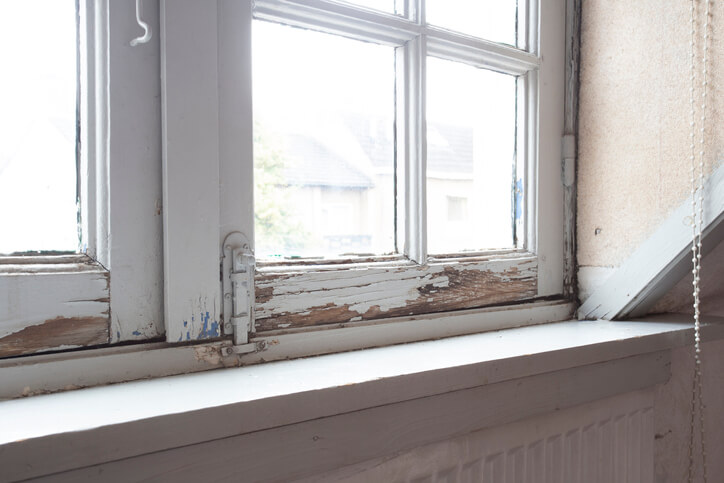Windows have always been a highly valued architectural element in buildings, as they allow natural light into the rooms, adequate ventilation and views to the outside.
At the same time, however, the windows are the least noise-resistant points of the structure through which external sounds penetrating the façade penetrate more easily.
Noise levels in large cities, mainly due to the density of the noise level
traffic or intense commercial activity, can far exceed the noise levels tolerable indoors if the windows are not well insulated. Therefore, in this article we will look at how to soundproof a window step by step.
Aspects to consider before soundproofing a window
Before starting the process, an acoustic measurement must be taken to determine the degree of acoustic insulation required for the windows. You can use a sound level meter for acoustic measurements or a specialized application for cell phones.
To calculate the degree of acoustic insulation that the windows of a room should offer, we will make a noise measurement with the sound level meter in front of the glass, with the windows closed. We simply subtract 30 from the value obtained, since this is the maximum dB level we wish to perceive, and the difference obtained is therefore the degree of insulation required in the windows.
Once we know the noise levels penetrating the house, we can determine the most appropriate acoustic solution we will need to apply.
There are other factors to consider before soundproofing a window, such as the thickness of the window, which allows us to install the thickness of the facade, or the costs associated with some alternatives.
How to soundproof a window
Next we want to analyze how to soundproof a window step by step. Keep in mind that this process is intended to mitigate sound transmission through windows.
Materials needed to soundproof a window
Although the following materials and elements do not necessarily have to be used equally in all cases, the acoustic solutions we propose are based on the use of the materials listed below:
- Acoustic curtains or, failing that, heavy curtains of thick fabric.
- Polyurethane sheets, Copopren type.
- Polyurethane foam in a can.
- Silicone of a color according to the window carpentry.
- Mineral wool.
- Acoustic membrane (bituminous sheet).
- 1 cm thick MDF panels.
- Insulating gasket, self-adhesive weatherstripping according to the characteristics of the carpentry.
We recommend taking an acoustic measurement at each of the steps you take, not only to check the effectiveness of the actions taken, but also to decide whether it will be necessary to apply the next step or not.
How to soundproof a window step by step
Here is how to soundproof a window step by step, economically and homemade.
First step: installation of curtains

Whether outside sound is filtering through the windows through the glass or through the sash and frame joints, installing curtains will help mitigate noise transmission and noise perception.
The purpose of this step is to interpose an element of a certain density between the interior and the exterior as an acoustic barrier. Therefore, the heavier the curtains, the better. If instead of placing a single curtain, two curtains are combined together, the results will be better and an extra decorative point will be achieved.
On the other hand, given the sound-absorbing properties inherent to a textile material with certain porosity and the undulations that the curtains can adopt when hung, this solution will also help us to improve the sound quality of any room, controlling the reverberations caused by noise.
Step 2: sealing of cracks and joints

Starting with the exterior, check the quality of the sealing of the carpentry to the work, covering the joints with polyurethane foam if there is sufficient space or with silicone for minor cracks. In some cases, you can even apply both solutions in the same order.
In extreme cases, where the separation of the carpentry with the work gives rise to large gaps, fill the gaps to be covered with mineral wool beforehand to improve insulation in combination with polyurethane foam.
Once the exterior joints are sealed, perform the same check on the interior, applying the same methods to mitigate noise transfer through the window frames to ensure more efficient sound insulation levels.
Finally, you will only need to check the joints of the window sashes. To do this, use the self-adhesive rubber sealing gaskets (or rubber weatherstripping) and place them both between the window sashes and the frame and in the sash joints to improve the window’s airtightness.
Step 3: Insulation of shutter registers

Whatever acoustic decision you decide to apply, the registers of the shutters are another of the weakest points through which high levels of noise leak.
One of the most common solutions to mitigate the transfer of exterior noise through the registers is to use materials such as Copopren or high density mineral wool to cover the gap between the shutter and the register cover. As long as the space allows it.
Once the cover of the register has been opened for the placement of such materials as an acoustic barrier, the blind must first be completely rolled up to check the actual space available, thus avoiding any risk of jamming the blind or even damaging the mechanism as a whole.
In some cases, the space available inside the register will not allow the installation of any material to improve the insulation of the window. In such situations, consider the possibility of lining the outer cover of the register with Copopren, subsequently covering the sheet with an aluminum plate.
Fourth step: glass insulation

If you have older single pane windows, you will know that the main problem is the amount of noise transmitted through the glass, so the only alternative is to cover the panes.
It is about placing any barrier between the glass and the room, the denser and heavier the better. You can design a series of acoustic shutters for subsequent installation on the inside of the windows, adapting their design to your personal situation.
The shutters can be composed of two 1 cm thick MDF sheets with a bituminous sheet in between. On the face that is in contact with the glass, place the Copopren sheets so that they are adjusted to the dimensions of each glass or fitted to each of the openings.
To fasten the shutters, you can adjust them to the windows by fixing them with hinges, eyebolts and eyebolts. This last recommendation will also improve the degree of thermal insulation of the room and will also serve to prevent the entry of light. On the other hand, the exposed MDF panels can be painted and even decorated with wood moldings.
Other options to consider
Replace windows
The first option to mitigate the entry of noise from the outside is to replace the installed windows with optimized windows designed to provide good acoustic insulation.
Although it is the most suitable solution, it is not always within the reach of all budgets, and it is also discarded by those who do not have the necessary thickness for its integration into the facade.
Add a second window
This is one of the most common alternatives for acoustic insulation, as it is as simple as installing another window using a method that suits our tastes and needs.13
To eliminate the disturbance of exterior noise, it will sometimes be necessary to insulate the walls by means of self-supporting walls, which is a good opportunity to integrate a new window into the whole.
Conclusion
If you are thinking of improving the insulation of a window, whether you are thinking of replacing it completely or any of the other options we have mentioned, remember that we have expert staff to advise you on the choice that suits you best, both for windows as for soundproofing any space as well as the service of installations and reforms.
How much noise can I reduce by soundproofing a window?
Depending on the method used, you can reduce between 10 and 40 decibels (dB). The best results are obtained with double glazing and quality weatherstripping.
What is the best option for soundproofing a window without building work?
Adhesive weatherstripping, acoustic curtains and insulating window films are quick and effective options without the need for renovation.
Is double glazing or a second window better?
Both options are effective. Double glazing improves thermal and acoustic insulation, while adding a second window creates an air chamber that further reduces noise.
What material is most effective for sealing window joints?
Polyurethane foam and acoustic silicone are the best options for sealing cracks and preventing noise leaks.
How often should I check the soundproofing of my window?
It is recommended to make a revision every 6 months, verifying that weatherstripping, sealants and acoustic panels are still in good condition.
Do thick curtains really help reduce noise?
Yes, acoustic curtains can absorb between 20% and 40% of exterior noise, especially if they are heavy and have several layers of fabric.



